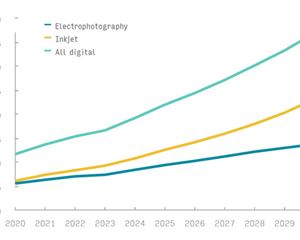Seven technologies in food packaging
Dr NC Saha, director, Indian Institute of Packaging (IIP), offers a lowdown on seven packaging technologies prevalent in India
25 May 2015 | By N C Saha
 Aseptic Packaging
Aseptic Packaging
 Retort Packaging
Retort Packaging
Retort packaging is nothing but pasteurisation of food product and is mainly for use in processing industry. We have a technology called canning, where, in 1870s, Nicholas Hebbard used metal cans to put the product inside, along with brine solution, salt solution and boiled it, to make the product sterile.
If you use the same canning technology for plastic films, it’s called flexible can. Here, you put the product into the retort and keep it in a pressure cooker and sterilise it. With this process, we can have a higher shelf life for the product.
Consider you have Dal Makhani, which has a shelf life of hardly two to three days. If you put the same product in retort pack, which is a combination of three layers, BOPP, aluminum foil and PET, you can have a much longer shelf life. In the retort technology, the shelf life can be increased to as much as three months.
 Modified Atmosphere Packaging (MAP)
Modified Atmosphere Packaging (MAP)
This is a technology which is applicable for fresh foods. Normally, fresh fruits and vegetables need breathing. Basically, it liberates Carbon dioxide and takes Oxygen. There is an exchange of gas happening in case of fruits and vegetables. In MAP, the same gas exchange is maintained but inside an artificial chamber. This chamber has got an atmosphere, 78% Nitrogen, 20% Oxygen, 2% CO2.
If the same gas mixture is reversed, and use a different gas mixture, we can check on the shelf life increase. We recently did a MAP analysis for meat products. Normally, the shelf life of goat meat or buffalo meat is not more than three to seven days. What we did here was, we packed the meat in a pouch and pumped 70% Oxygen instead of Nitrogen, 20% Nitrogen and rest CO2. This is because, the meat needs Oxygen.
If it gets oxidised, the redness of the meat is maintained. By this, we could increase the shelf life from three days to 13 days.
 Controlled Atmosphere Packaging (CAP)
Controlled Atmosphere Packaging (CAP)
 Breathing films
Breathing films
Almost all fresh fruits and vegetables need breathing. It is not dead when you pluck it from the tree; it’s still breathing. So, you need a package which helps it continue breathing. In case of breathing films, we have two-chambers in the package, one which liberates CO2 and the other which pulls of other gas.
This way, the chamber is filled with that gas which they want to take in. As a result, it increases the shelf life.
 Active packaging
Active packaging
Active packaging is a process wherein the packaging atmosphere is influenced by scavengers like moisture absorbers, CO2 or ethylene absorbers or CO2 or ethanol detectors. In other words, active packaging interacts with a product by actively regulating conditions of the packed food product, thereby extending its shelf life.
This particular concept of packaging is employed for processed food in packaged conditions, where the packages are made of plastic materials. In other words, the concept of active packaging for food products, by means of antimicrobial film, antioxidant film, oxygen scavenging, ethylene scavenging, etc, are possible only in plastic-based flexible packaging materials.
 Blown film technology
Blown film technology
In pharmaceutical industry, you can segregate this into two major technologies. One is blown-fill seal technology, which takes care of sterilisation of the product, all inline and under sterile conditions. The other technology is used for the glass products used in the pharmaceutical industry, mainly ampoules and vials.
This technology is called the blow-and-blow technology, with which you can produce thinner glass bottles.












 See All
See All